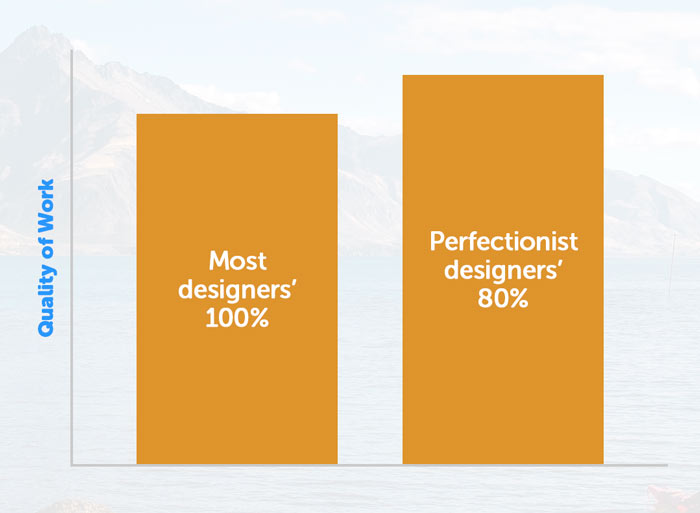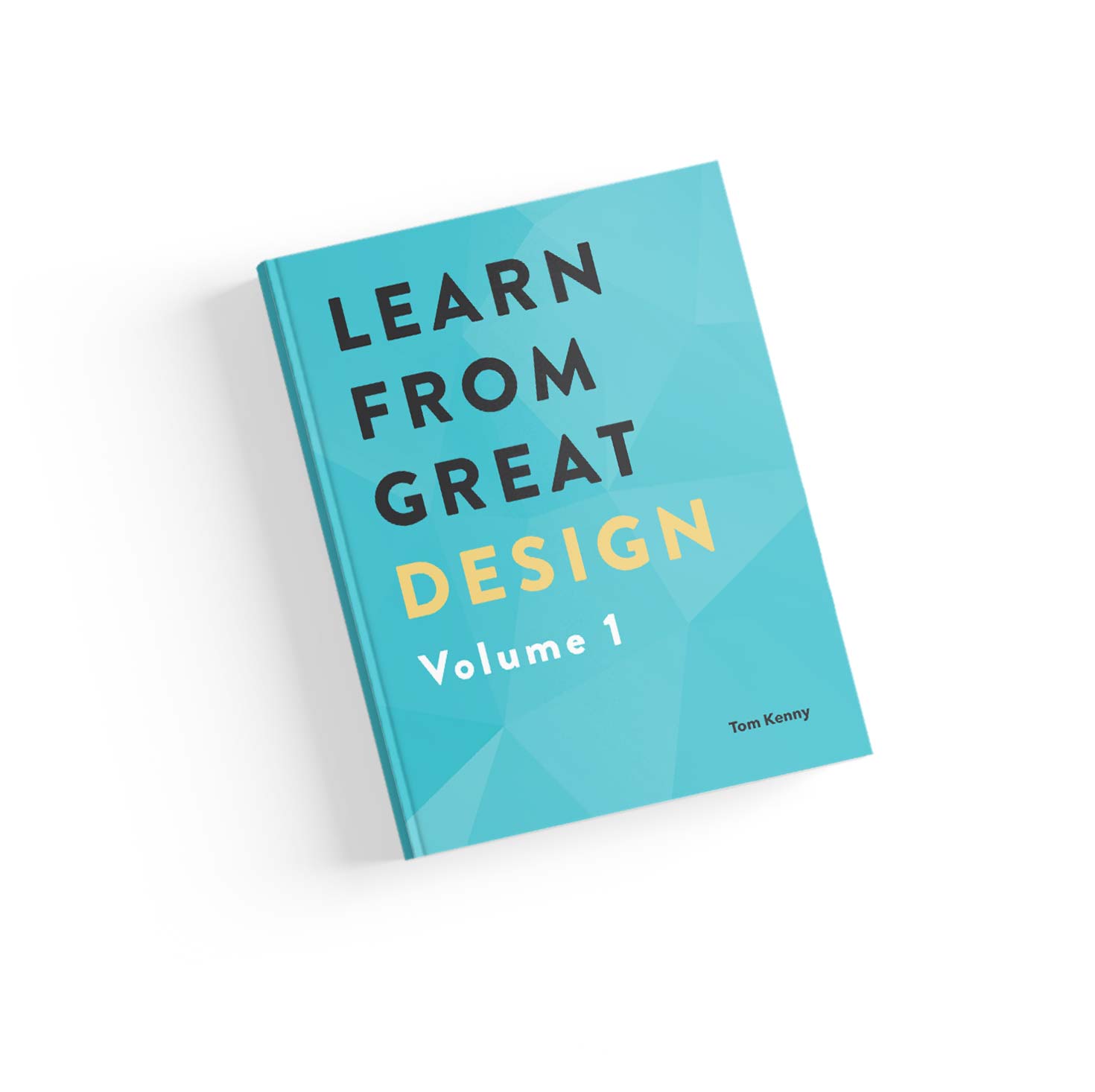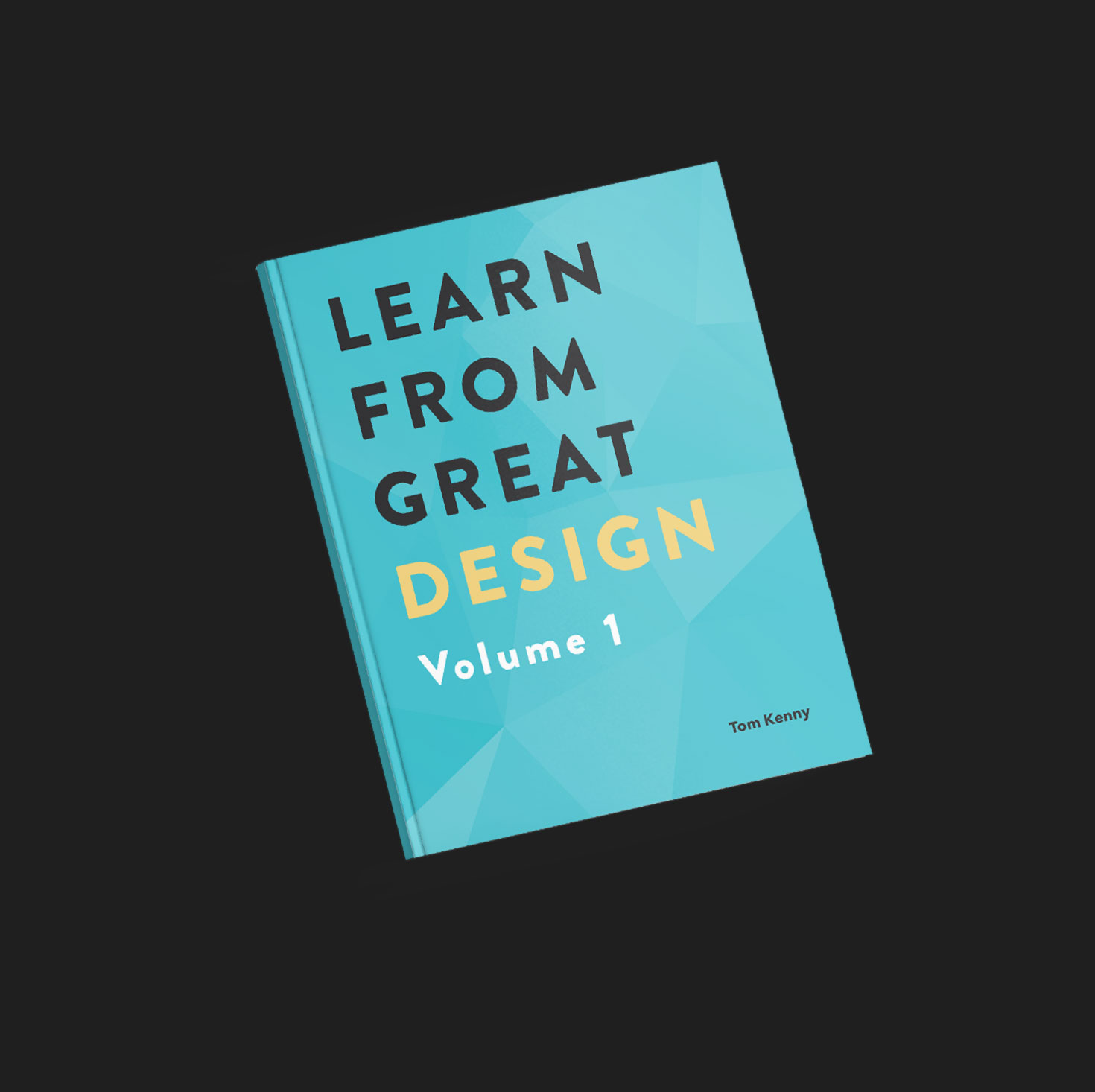Perfectionism can be devastating. It can make you feel depressed, frustrated, anxious, and even angry, especially if you constantly criticise yourself for not doing a good enough job after spending a lot of time and effort on a design.
It’s an unhealthy mindset. It isn’t healthy for you and it isn’t healthy for your design work. It’s a fear many designers struggle with so it needs addressing right away with a new way of thinking.
Pobody’s Nerfect

It might be a bit obvious but it’s worth pointing out that nobody is perfect. Top designers produce 4x the output of other designers and do you think everything they create is great? Not a chance. The reason they create great work it because they do it without the worry of being perfect.
Look through portfolios of the best web designers and I’m sure you’ll find some work that isn’t as good as the rest. You can be sure there are also designs they’ve created that haven’t even made it onto their portfolios. Every designer will do work at some point they deem not worthy of displaying on their portfolio.
Of the work you do see in top designers’ portfolios, I bet you could pick holes in it. You could probably see a number of areas where improvements can be made because not everything is perfect, even from the best of the best.
Cure Perfectionism with The 80/20 Rule
First, a brief background on 80/20 thinking, the same kind of thinking I use when building a website. Generally it means roughly 80% of your outcomes come from 20% of your inputs. In the case of perfectionism, the last 20% will take 80% of your effort, such is the drain of perfectionism.
Let’s take the positive aspect of your perfectionism. Your 80% is actually better than most people’s 100%. This is because your ideal quality of work is so high that lowering it down to 80% is still a high level.

80% Minimum
I admit I’ve adapted this idea from Sean McCabe but only because I know it works. I’ve switched my mindset with this new way of thinking and it has helped me immensely.
You have to become comfortable with less than perfect but you can’t let that level drop too low and while Sean recommends you hit the 90% mark, that can still be too close to perfectionism for some. What I mean by that is it’s easier to aim for an 80% minimum (which is still going to be more than most, as discussed above), use that as your base and work up from there. You’re free to move up as much as your comfortable with but keep that minimum in the back your mind at all times.
Once you start getting beyond the 80% mark, it becomes increasingly difficult and time consuming to get closer to 100%. This is the 80/20 rule in action as the last 20% of work takes 80% of the effort. It just isn’t worth wearing yourself out to make a project absolutely perfect. That will inevitably lead to burnout at some point. Not striving for perfection on every design will give you time to take that all important break between projects.
How Do You Know When You’ve Reached 80%?
Well, this is a tough question because designing is not like a computer game where you can see a progress bar but there are signs you can look out for.
You’ll be able to tell when you’ve reached 80% because it’ll be at the point where a design can be unleashed on the world even if it isn’t perfect. Everything can be improved of course but it helps to imagine a standard you want to reach which is below perfection.
I can almost guarantee the times when you are “in the zone” are during that first 80% of a project. There is much more rhythm at that stage but the last 20% is much more difficult to get into the same zone and the anxiety only increases as you try to make change after change. That increase in anxiety of perfection is also a sign that you’re at, or beyond 80%.
Create More Designs at 80% Rather than Fewer at 100%
You already know that top designers create 4x more work than other designers, so let’s link the two together. You also now know that a perfectionists 80% is better than most designers’ 100%, meaning you’ll create more work in less time. As a result, you’ll gain more experience and become a better designer faster.


